Exploring Russia
Our Travel GuideHave you ever visit the biggest country of the world? Do you know what is going on overseas? Let’s explore Russia together!
Everyone knows that Russia is a huge country with a great history and rich cultural traditions. And we are glad that you have a desire to get to know her better. Undoubtedly, the way of life in Russia differs from the European or American – Russia has something to surprise you with! To many of you Russia may seem like a cold country, where in order not to freeze, you have to walk in a hat with earflaps and drink vodka. Yes, it is really cold there in winter, but the low temperatures outside the window are compensated by the warmth of communication.
Russia is a large and multinational country whose territory is located on two continents – Europe and Asia. Russia ranks first in the world in terms of territory – over 17 million square kilometers. This big country has the longest state border in the world and borders 20 states. Russia is a country with a developed culture, education, economy, industry and has great investment potential.
Russia has unique natural resources – the world’s largest freshwater lake Baikal, the volcanoes of Kamchatka, the golden Altai mountains (included in the UNESCO list). Significant areas of the country have preserved the pristine beauty of mountains, forests and steppes. Forest zones are rich in animals, including rare ones listed in the Red Book.
What about population? In this country lives around 147 million people with different nationality, traditions and with different local language, which is interesting while all these people live in one country.
Are you still scared of Russia weather and think that is always cold? We would like to dispel this myth! The uniqueness of the Russian climate lies in its diversity – from the subtropics to the Arctic zone. Russia is the only country in the world through which 8 climatic zones pass. At the same time in one end of the country there may be sunny weather with a temperature of +28 ° C (+82.4 F), and in the other the thermometer will show -28 frost (- 82.4 F). The hottest weather in Russia is around +45 ° C (113 F), but the coldest recorded temperature is -65.4 ° C (149.72 F) this is really cold.
There are 11 time zones in Russia. This means that driving through the entire territory of the country on December 31 you can meet the arrival of the New Year 11 times! We know that this is crazy, but interesting. Maybe somebody tried it before.
Russia at a Glance
CURRENCY: The Russian Ruble is the currency of Russia.
VISA: Visitors must apply for a Russian Tourist visa that would include an application, one passport type photo and documentation on your hotel.
LANGUAGE: The official language of Russia is Russian, but many people in the larger cities speak English. Many other indigenous languages are spoken throughout the Federation.
- Sight Seeing 90%
- Cost 85%
- Ease of Travel 75%
- Activities 85%
Russia is a huge and diverse country. From historic towns and cities to incredible wild places. One could not possibly see all of it in one trip, let alone four or five. Kati would go with her grandmother to visit and with school trips and has still not seen it all. It is larger than the US and think about how long it would take to see the entire US. With indigenous people, mountains, lakes, and vibrant cities, Russia has it all to explore.
Top Experiences in Russia
POPULAR TOURIST REGIONS
Moscow
Acquaintance with any country starts from its capital. Therefore, it is not surprising that most tourists coming to Russia often stay in Moscow. Moscow is the capital and largest city of Russia, economic, political, cultural, scientific and tourist center of the country.
The three main sights of Moscow are the Kremlin, Red Square and Arbat. Naturally, there are hundreds of important sights, but in any excursion around Moscow, tourists are offered, first of all, these three places that must be seen. The Kremlin is a huge complex where any visitor will find something interesting. There are cathedrals, palaces, the Armory, and the famous Red Square!
Also of great interest is Moscow and Moscow region estates, for example, the famous Tsaritsyno, Arkhangelskoye, Kolomenskoye, Kuskovo. This historic sights all have beautiful architecture and have to be seen when visiting.
Also, do not ignore the majestic cathedrals, such as the Cathedral of St. Basil the Blessed, the Cathedral of Christ the Savior, and, of course, the Novodevichy Convent.
Interesting fact: Moscow is home to 12.1 million people, making the city one of the ten largest metropolitan areas in the world. The city stretches 52 km from south to north, and 40 km from west to east!
St Petersburg
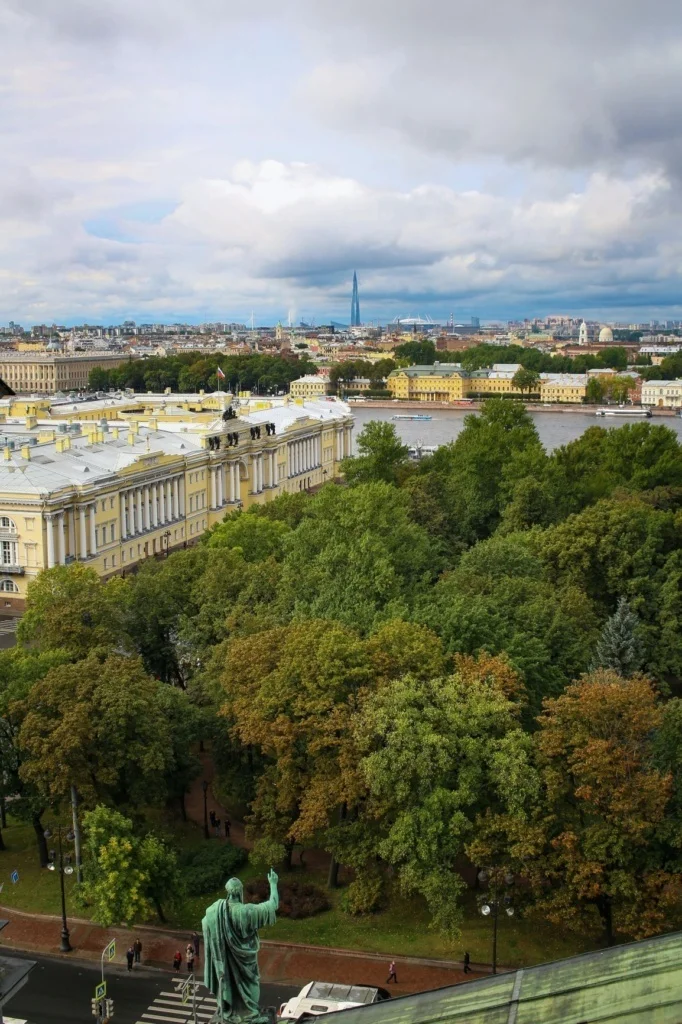
St Petersburg, Russia
Unlike the frenetic pace of Moscow, St. Petersburg has a leisurely way of life, where you will be immersed in history while walking.
St. Petersburg is called the cultural capital of the country, the Venice of the north and Peter’s creation, and all this is true. Few places on the planet in one city have so many attractions, museums, monuments, palaces, theaters.
St. Petersburg is just a paradise for visitors with the entire historical center of the city, as well as in Rome, Paris and Venice, is included in the UNESCO heritage list. And the city is called the Venice of the North, because it is located on 42 islands that form rivers and canals. There are about 580 bridges, 20 of which are drawbridges.
No less an attraction of St. Petersburg – its inhabitants, for the most part, are friendly and sympathetic, maybe this is why the atmosphere in the city will seem to every visitor close, warm and dear.
Interesting fact: The famous “white nights” can be seen in St. Petersburg from June 11 to July 2 due to the fact that the sun during this period hides behind the horizon by no more than 9 °. By the way, at this time the city hosts many different festivals, excursions, there are much more tourists, so it is advisable to book tickets and hotels in advance.
Krasnodar region
Krasnodar Territory is located in the south of the European part of Russia, on the coast of the Black and Azov Seas. From the south it borders on Georgia and Karachay-Cherkessia, from the north – on the Rostov region. This is the warmest region in Russia. It happens that even in winter there is no snow at all, which is very strange for Russia.
The Kuban River flows through the Krasnodar Territory (which, in fact, gave the region its second name). The river divides the entire territory into two unequal parts: most of the northern part is occupied by the plains, and one third, the southern one, is the foothills of the North Caucasus.
The main resort cities of the Krasnodar Territory are Sochi (the site of the 2014 Olymipics), Anapa, Gelendzhik and Tuapse. Also, many tourists go to rest in Novorossiysk, Yeysk and Taman. This region is very popular with visitors as in summer you can enjoy the sea and in winter mountains!
Altai Republic
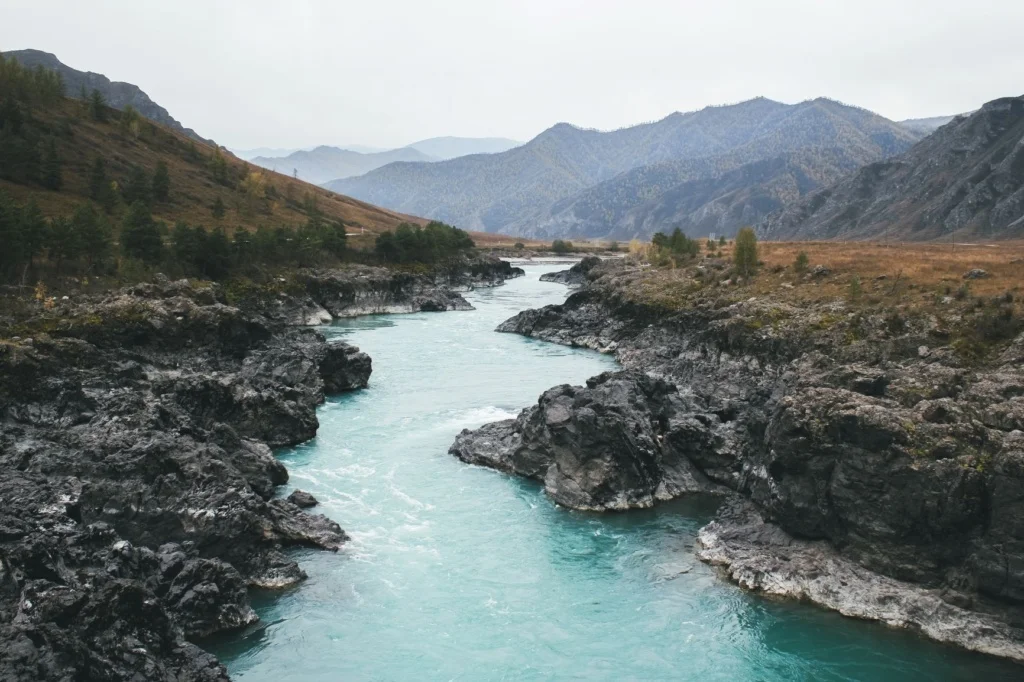
Altai
The Altai Republic is filled with snow-capped mountains, picturesque lakes and turbulent rivers. Altai is regarded as one of the precious pearls in the crown of Russia, which leaves every visitor to the region in awe of the raw, natural beauty. European tourists even nicknamed Altai “Siberian Switzerland” for its resemblance to the Alps, but many prefer Altai due to the unspoiled visitor infrastructure. In addition, visitors are drawn here by legends about the mysterious entrance to the magical land of Shambhala.
Interesting fact: The weather in Altai is unpredictable no matter what time of the year you go here: the air temperature can change significantly within a few hours. Dress in layers and enjoy.
Republic of Bashkortostan
Bashkiria, or officially the Republic of Bashkortostan, is located on the slopes of the Southern Urals: taiga forests here side by side with birch groves, steppes are replaced by mountain tundra, and a full range of entertainment is provided for visitors: from skiing and snowboarding to rafting on rapid rivers, from exploring caves to a beach holiday on numerous lakes, from the romance of hikes and tents to prestigious spas with mineral waters and healing mud. The most beautiful natural and unique cultural and historical heritage attract more and more visitors to stay a couple of days in Bashkiria. The capital of Bashkiria, Ufa is one of the oldest cities in the Urals and is considered one of the greenest cities in Russia. Because of the natural beauty of the Republic of Bashkortostan, it is sometimes referred to as the Russian Switzerland.
Gold Ring of Russia
The Golden Ring includes several routes, from which a traveler can choose depending on interests, time, and the cost. The routes themselves on the Ring take from a week to a month, depending on the how much one wants to see and do. The main cities of the Golden Ring are Vladimir, Suzdal, Yaroslavl, Kostroma, Sergiev Posad, Rostov the Great, Pereslavl-Zalessky, and Ivanovo. The ring includes 6 regions: Moscow, Vladimir, Kostroma, Tver, Ivanovo and Yaroslavl. In many cities of the Golden Ring, visitors can experience ancient cathedrals, monasteries, architectural monuments, and handicrafts.
Interesting fact: The very name “The Golden Ring of Russia” appeared in 1967 from the journalist Yuri Bychkov, who wrote a series of articles about 8 Russian cities with invaluable historical and cultural heritage, and opened the most interesting routes for travelers around the world.
Caucasus
Caucasus, more precisely the region of the Caucasian Mineral Waters. It is located in three territories of Russia: in the Stavropol Territory (the largest territory – 58%), in Karachay-Cherkessia (33%) and in Kabardino-Balkaria (9%). And all this – on the northern slopes of the main Caucasian ridge, 20 km from Elbrus.
It is believed that all 30 types of medicinal mineral springs existing in the world are concentrated in this region. And the therapeutic mud of the Tambukan Lake is recognized as one of the best in the world. At least in Eurasia, there is definitely no equal to this resort area in terms of health benefits. In addition to the actual treatment among visitors, excursions to the ski resorts of Elbrus and Dombay are in great demand. Elbrus (by the way, the highest mountain in Europe) is clearly visible from almost any city in the region. Yes, skiers and snowboarders love to go here, but in the summer you can find a lot of activities here: you can raft, you can fish in trout lakes, you can fly on paragliders. Or, finally, climb Elbrus itself!
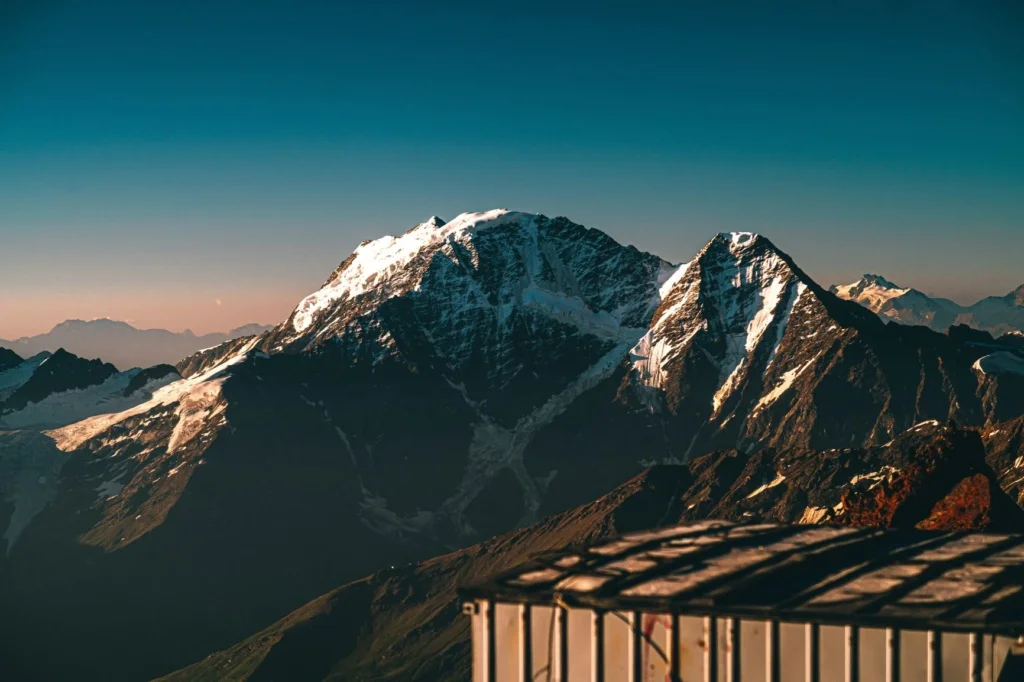
Mt Elbrus
Tatarstan
Tatarstan is a republic that is part of the Russian Federation. More than half of its population are Tatars. The republic attracts visitors who want to get acquainted with the culture, traditions, architecture, in which various directions and styles are mixed. A huge number of foreigners visit Tatarstan every year.
By the way, only after entering the territory, it is immediately noticeable that you are in a peculiar and unusual republic. There are signs everywhere, travel is not difficult even for those who do not understand the language at all. An important point is that the locals communicate in their own language (Tatar), but they also know Russian.
Kazan (the capital of the Republic of Tatarstan) is the third, as it is often called, capital of Russia, located on the left bank of the Volga at the mouth of the Kazanka River. It is unlikely that such a harmonious combination of the cultures of the ancient East and the modern West can be seen anywhere else in Russia. The city stretches along the Volga for 15 km; its length, both in the northern and eastern directions, is about 30 km. In the west of the city there is the only bridge across the Volga. The Kazanka River divides the city into a historical part south of it, and a modern part to the north of it. Kazan is indeed a very beautiful city! And the Republic of Tatarstan is the eastern and unusual region of Russia with beautiful mosques throughout the republic. The most important thing that you should visit here is the Kazan Kremlin, and yes in Russia it is not only in Moscow! By the way there are about 50 kremlin in Russia. And also the white mosque in Bulgar, which resembles the Taj Mahal. Tatarstan is rightfully proud of its national flavor. Tatar cuisine has evolved over the centuries and largely depended on the socio-economic and natural living conditions of the people, and is also very satisfying and incredibly tasty!
Kaliningrad
Kaliningrad is the westernmost city in Russia, together with the region forming an enclave – part of the territory of a state, completely surrounded by the territory of another state. In this case, there are two of these states: Lithuania and Poland. Kaliningrad (or as it used to be called Konigsberg) has a German heritage, and is located on the Baltic Sea. Holidays in Kaliningrad are especially good in May, summer and early autumn – until about October. The weather at this time is especially comfortable. New Year’s Eve is another good time to travel to Kaliningrad. The city is becoming famous as it is one of the best options for traveling in Russia on New Year’s holidays. Kaliningrad is a city rich in attractions, but still not very big. In addition to gingerbread houses in the center, there is a wonderful zoo, green parks for walking, an embankment, museums and much more. Kaliningrad is called “Russian Europe” for a reason. Kant Island, Cathedral, Fishing Village, Brandenburg Gate. This city resembles the small towns of Latvia and Lithuania.
Karelia
Karelia is a unique world that amazes with its majestic nature and mystery. To this day, untouched rivers, lakes and forests, some of the cleanest in Europe have been preserved here. But not only the delightful landscapes attract visitors here, the culture of this unique place, the fusion of the Northern Slavic and Finno-Ugric tribes, is quite mysterious. An example is Mount Vottovaara, which is considered sacred in the area. In its vicinity there are Seid stones, which were worshiped by local residents. They argue that if you perform the pagan ritual “karyala-aho” near them, you can see the demi-people-demigods, who lived in those days, perhaps even the Atlanteans, through many centuries. Whether it is a fairy tale or not, judge for yourself, but in the vicinity of this mountain mysterious and inexplicable phenomena occur, which only enhances the mystery of this place.
Karelia is located in the north-west of Russia, from the north it borders with the Murmansk region and the White Sea, from the west – Finland, from the south – the border with the Leningrad and Vologda regions, and, finally, from the east – with the Arkhangelsk region. The capital of the republic is Petrozavodsk.
First of all, visitors come here for active, cultural and ecological tourism thanks to the numerous historical and cultural monuments, virgin nature and vast spaces where no human has ever set foot. Lovers of water tourism, bicycle, motorists, fishermen, hunters also come. Winter also does not stop a visitor, interests simply change. At this time, lovers of all kinds of skiing, snowmobiling, and dog sledding. And, of course, the main thing that you should see here is the Kizhi island, which is famous for its monuments.
Siberia
Siberia makes up about 77% of the territory of Russia, but a significant part of it has no roads and is not adapted for mass tourism. Foreigners usually go to Lake Baikal (as well as Kamchatka, although technically it does not belong to Siberia). Therefore, in reviews on foreign tourist sites from Siberian cities, Irkutsk and Baikal are most often mentioned. You’ve probably heard of Siberia – a cold, barren desert in the midst of permafrost. But this is just a stereotype! Siberia is not a land of snow storms, it is much more modern than we think. Siberia has trees and lakes, and many natural beauties. And yes, there are people who choose to live there. Still, heading to Siberia can be comfortable for travelers, where you will enjoy the sunset by the pool with a drink. But if you nevertheless decide to visit Siberia, take a look at these places – mountain Shoria (a popular ski center), beautiful Lake Baikal, “Stolby” Nature Reserve
THE MAIN ATTRACTIONS OF RUSSIA
Trans-Siberian Railway
Part of the world’s longest railroad, the historic section of the Trans-Siberian Railway stretches from Miass (a city in the Urals) to Vladivostok along the border with China and North Korea. The history of it is that Tsar Alexander III began to build the railway in 1891, and it was completed by his son Nicholas II in 1916. The length of the oldest part of the Trans-Siberian Railway is more than 7000 km, and the total length of the railway line connecting Moscow with Vladivostok is 9288 km. It is very popular among travelers who decide to travel around Russia, because they can see almost all of Russia without leaving the train. We know many people that love to travel on vintage and historic trains and the trans-siberian railway will not dissapoint.
Elbrus
Mountain Elbrus, 5642 meters high, belongs to the Caucasian Range, located in the south of Russia. Elbrus is included in the Seven Peaks – the highest mountains located on different continents of the planet. This is the highest mountain in Russia, and thousands of beginner and experienced climbers come here every year.
Elbrus was previously a volcano, but none of its eruptions have been recorded, so it is believed that it has died out long ago. You can reach the 3800 meter mark by a convenient cable car. At an altitude of 4130 meters, the Hotel used to be located, which burned down in 1998, and now a new building is under construction.
Valley of Geysers
The Russian Far East is an amazingly beautiful and unusual place. There are many unique natural attractions here, one of which is the Valley of Geysers on the Kamchatka Peninsula – the second largest geyser field in the world.
The valley was discovered in 1941 by the Russian scientist Tatyana Ustinova, and since then many visitors and researchers have explored the Valley. The valley is included in the reserve, so there are certain rules for organizing excursions. The most convenient way to get to the Valley is by helicopter, but can be very expensive.
Kizhi Island
This is one of the main attractions of the Republic of Karelia, located in the North-West region of Russia, bordering Finland and washed by the waters of the White Sea. Since the 13th century, Karelians have lived here – a Finno-Ugric people who found themselves at the junction of the cultures of the West and the East.
Kizhi Island is a real open-air museum; you will not find anything like the local wooden churches anywhere else in the world. Especially beautiful is the 37-meter Church of the Transfiguration of the Savior with its 22 domes. The church was founded at the beginning of the 18th century and was built entirely of wood. In addition to it, there are wooden peasant houses, windmills, bell towers and barns. There are very few indigenous local residents, but they carefully preserve their traditions – they weave various crafts from birch bark, do embroidery, sew national clothes, knit lace and sing folk songs.
Cathedral of St. Sophia in Novgorod
The incredibly beautiful church is the main temple of Novgorod, a very ancient Russian settlement. The cathedral, in turn, is the oldest surviving church built by the Slavs, the construction of which was completed in 1050. The St. Sophia Cathedral is located on the territory of the Novgorod Kremlin, the height of the church is almost 40 meters.
The temple is crowned with five domes; several ancient Orthodox shrines are kept here, for example the Icon of the Mother of God “The Sign”, which, according to legend, in 1170 saved Novgorod from an attack by one of the princes. His army besieged the city, and when the inhabitants realized that they could not fight back, they began to offer prayers to the Lord. On the third night of the siege, Archbishop John heard a voice commanding him to take this icon out of the cathedral, and he followed the will of God. When one of the arrows of the besiegers hit the icon, tears flowed from the eyes of the Most Holy Theotokos, after which the army of the besiegers threw down their weapons and ran away.
Lake Baikal
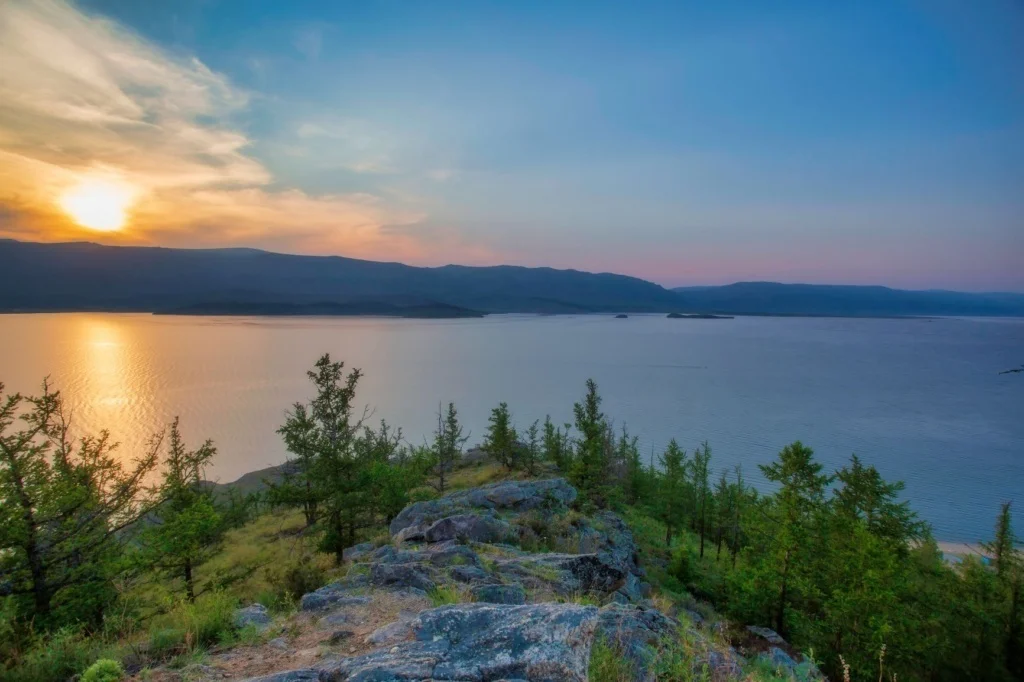
Lake Baikal
Traveling along the Trans-Siberian Railway and not enjoying the views of Lake Baikal is simply strange. This ancient lake is the cleanest and deepest fresh water body of the planet. It contains 20% of the world’s fresh water reserves, and the depth of the lake reaches 1642 meters.
Baikal was formed about 25 million years ago, and now it is one of the most famous and beautiful bodies of water in the world. The lake is very large, so many locals call it the sea, and another common nickname is the Pearl of Siberia. If you decide to spend a few days here, you can stay in one of the tourist centers or rent a house, and for a very reasonable fee. Fans of exotic holidays can put up a tent in some picturesque place on the shore.
Please note that the impressions of Baikal will be incomplete if you do not try the smoked Baikal omul – this is one of the most delicious fish in the world!
Suzdal
The city of Suzdal was previously the capital of one of the principalities of Ancient Rus, and now it is part of the so-called Golden Ring of Russia – ancient cities in which beautiful examples of medieval Russian architecture have been preserved.
Each city of the Ring is unique in its own way, but Suzdal is just one great architectural masterpiece. There are many beautiful, surprisingly well-preserved cathedrals, churches and entire monasteries, and in the very heart of Suzdal is the famous Suzdal Kremlin. Unfortunately, its wooden towers were destroyed by fire in the 18th century, but the earthworks and several buildings still exist, so there is still something interesting to see.
Suzdal is like a huge open-air museum: walking through the streets, it is easy to imagine that you are in the distant past.
Moscow Kremlin
Russians will tell you that to describe the beauty of the unique structures and relics of the Moscow Kremlin, words are not enough even in the great and mighty Russian language. Located in the historical center of the capital of Russia, this architectural ensemble has long become the country’s hallmark.
The first wooden fortifications appeared here in the 12th century, and under the Grand Duke Dmitry Donskoy, the Kremlin became white-stone. The Kremlin has long been “repainted” in red as we know it today. Ivan III the Great (the grandfather of the first Russian Tsar Ivan IV the Terrible) ordered to find the best Italian architects, they rebuilt the residence of the prince, using burnt bricks.
On an area of 27.5 hectares, there are the Faceted Chamber (formerly it was the main ceremonial hall of the Kremlin), three cathedrals – the Assumption, Arkhangelsk and Annunciation, the Armory, the Ivan the Great bell tower and many other architectural masterpieces.
The Kremlin museums allow you to plunge headlong into the richest Russian history – it will take a lot of time to go around all the expositions and view all the exhibits.
The Moscow Kremlin still serves as the residence of the rulers of Russia: reception halls and the official office of the president are located here, and concerts and various solemn ceremonies are held in the Grand Kremlin Palace.
Hermitage
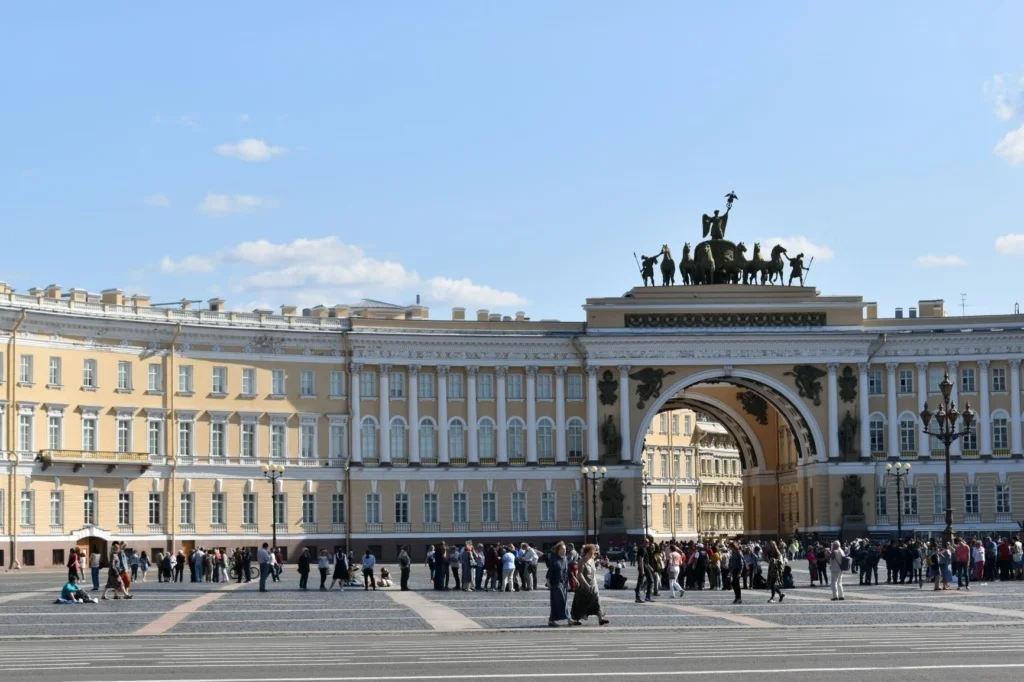
The Hermitage
The Hermitage in St. Petersburg is the main treasury of Russia, in the literal and figurative sense of the word. Directly – because the halls and storerooms of the museum store a huge number of priceless paintings, jewelry, samples of sculpture and ceramics. In the figurative – because it reflects the culture and history of Russia.
The museum began in 1764 as a collection of paintings by Empress Catherine II the Great, who spent large sums of money to purchase paintings by brilliant European artists. Most of the paintings hung in the halls of the famous Winter Palace (the favorite residence of the Russian emperors), which were then called the Hermitage (in French it means “a secluded place, shelter”).
Initially, ordinary people could not admire the masterpieces – the museum was opened to the general public only in 1852. Anyone who has ever been to the Hermitage will remember this for the rest of his life, because an absolutely incredible atmosphere reigns here, the luxury and splendor of the palace halls will not leave anyone indifferent. Please note that you need to purchase a special ticket for photo and video shooting, and you can only take pictures without a flash.
St. Basil’s Cathedral
This unusual and amazingly beautiful temple is located in the center of Moscow, on Red Square. You can find a description of the cathedral in any tourist guide, but it is better to see it with your own eyes, because it is impossible to describe it in words. It looks like a huge bonfire burning in the heart of the Russian capital: when the bright Moscow sun plays on its multi-colored domes, it is an incomparable sight.
The cathedral was erected in 1555-1561 by order of Ivan IV the Terrible. According to legend, after the completion of the construction, the cruel Russian Tsar ordered to blind the architects Barma and Postnik so that they could no longer build anything equal to this temple in beauty and grandeur. The tsar achieved his goal – in no corner of the world there is nothing similar to this architectural masterpiece.
Red Square
A walk along Red Square is the first thing that every traveler should do when you get to the Russian capital. The main milestones in the history of Russia are associated with this place, as evidenced by historical monuments – the Execution Ground, where the Russian tsars executed troublemakers, criminals and rebels; a monument to Kuzma Minin and Dmitry Pozharsky, who led the people’s militia at the beginning of the 17th century to drive the Polish occupiers out of Moscow; Lenin’s mausoleum and much more.
On Red Square, various events dedicated to public holidays and military parades were regularly held (and are being held), from here on November 7, 1941, Soviet soldiers went straight to the front.
By the way, in the old days the word “red” meant “beautiful”, and if you see the square with your own eyes, you will understand why it was named that way.
Derbent
The unique city of the Russian republic of Dagestan is not very popular among tourists, but it is worth visiting it at least to walk along the streets of one of the oldest inhabited cities in the world.
Derbent is famous for its truly Caucasian hospitality and rich cultural traditions. Among the main cultural and historical attractions are the Derbent Wall, which is about 1.5 thousand years old, and Naryn-Kala, an ancient fortress that once served the defenders of the city with faith and truth. The oldest Muslim temple in Russia is located here – the Juma Mosque, built in 733.
Among the sights of the city, has to mention the Derbent cognac, which is made from Dagestan grapes. If you happen to get to Derbent be sure to try it. Now it is the second largest city in Dagestan: the population is about 100 thousand inhabitants, most of whom are Lezgins, Azerbaijanis and Tabasaran.
Mountains of Altai
If you think that the most beautiful mountains on Earth are the Alps, then you have to visit Altai. This is the highest mountain system of Siberia, on its territory the borders of Russia, China, Mongolia and Kazakhstan converge, and unlike European mountain resorts, not all trails have been trodden by the ubiquitous tourists here.
The mighty and full-flowing Siberian rivers – the Ob, Irtysh and Yenisei – are born in the Altai mountains, and rare animals are found in the stunning beauty of the valleys, which cannot be found anywhere else.
Since ancient times, the Altai has been home to original tribes and peoples that worship gods in the form of animals and practice pagan rituals.
Of course, Russia is a big country that can be explored for years. Here we have presented the main places that are interesting to visit and hope we have dispelled the myth about the cold country. It would take literally a year to see everything on this list, but it shows the diversity and range of attractions on a trip to Russia.
Russia
Our Travel Blog
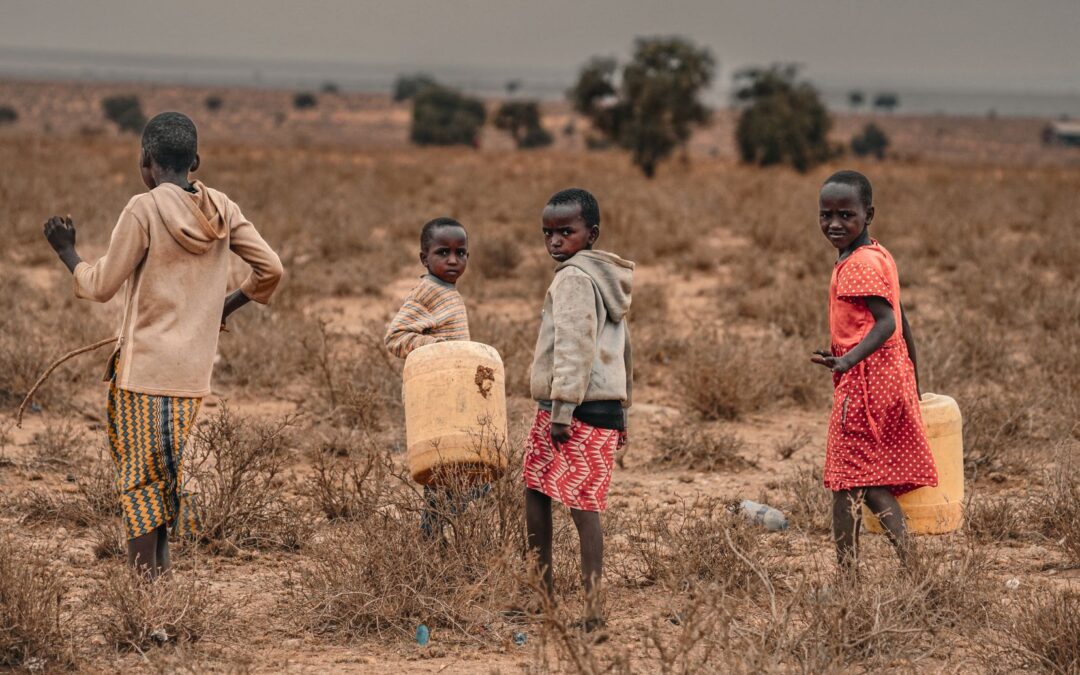
The Human Connection: Why We Should Care About People We Meet on Our Travels
“The Human Connection” explores the profound impact of human interactions during travels. It emphasizes the importance of embracing local cultures, understanding diverse perspectives, and forming meaningful connections. This post encourages readers to see beyond tourist spots and delve deeper into the heart of the places they visit, through the people they meet.
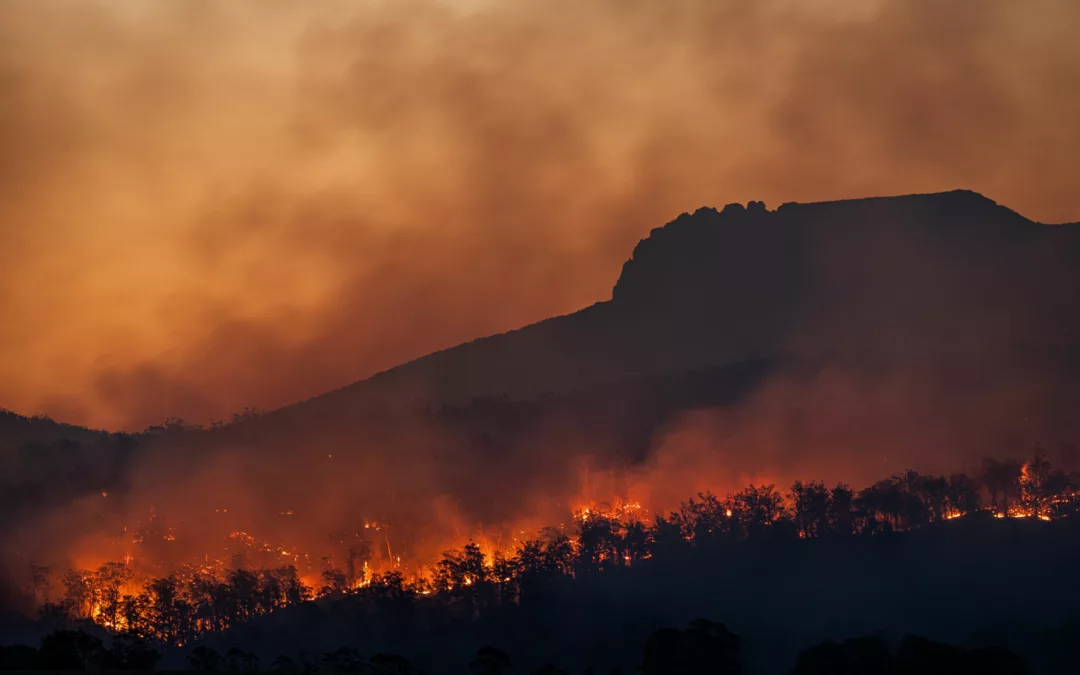
Why Climate Change Matters: Understanding the Threat to Our Planet
Climate change is not just an environmental issue; it is a threat to our very existence. Rising temperatures, extreme weather events, and melting ice caps are just the beginning. The consequences of inaction are dire, affecting ecosystems, economies, and human lives. It is imperative that we understand the urgency and take immediate action to combat this global crisis.
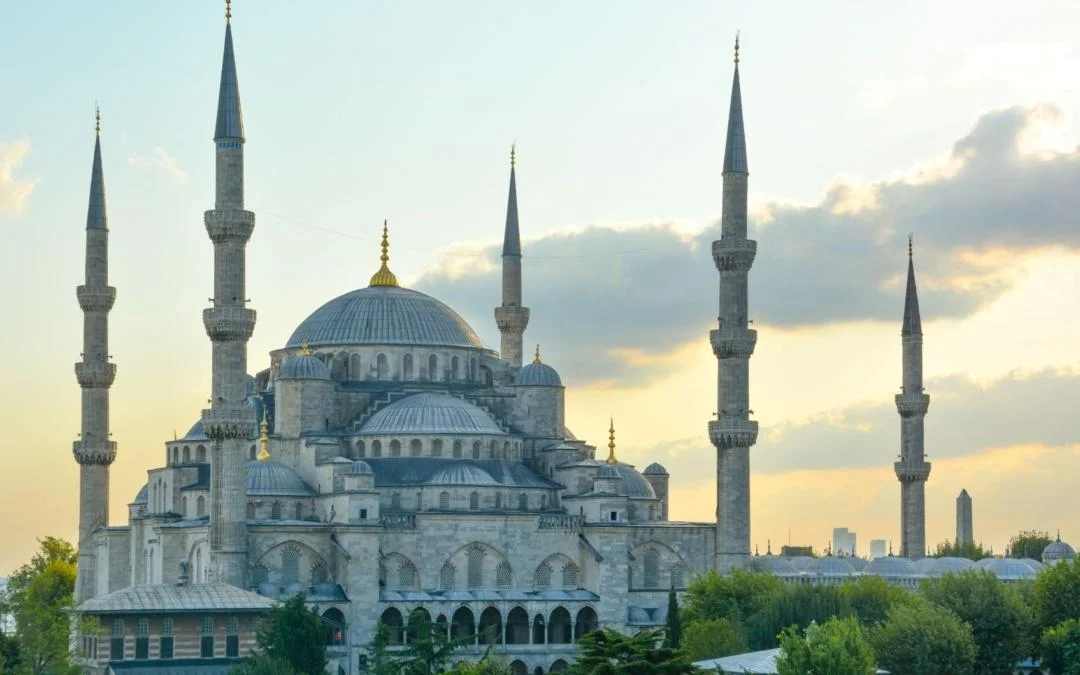
Things to do in Istanbul
Istanbul is a city of wonders, with a rich history and culture that will captivate any traveler. From the iconic Blue Mosque to the bustling Grand Bazaar, there is something for everyone to explore. Take a boat ride along the Bosphorus to admire the city’s skyline, or wander through the winding streets of the old city to discover hidden gems. With its vibrant nightlife, delicious cuisine, and stunning architecture, Istanbul is a must-see destination.

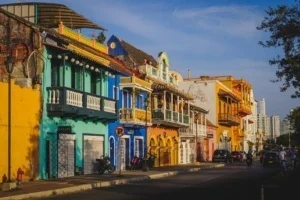

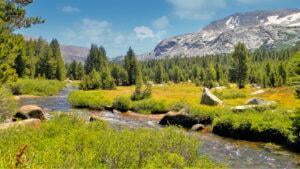
0 Comments